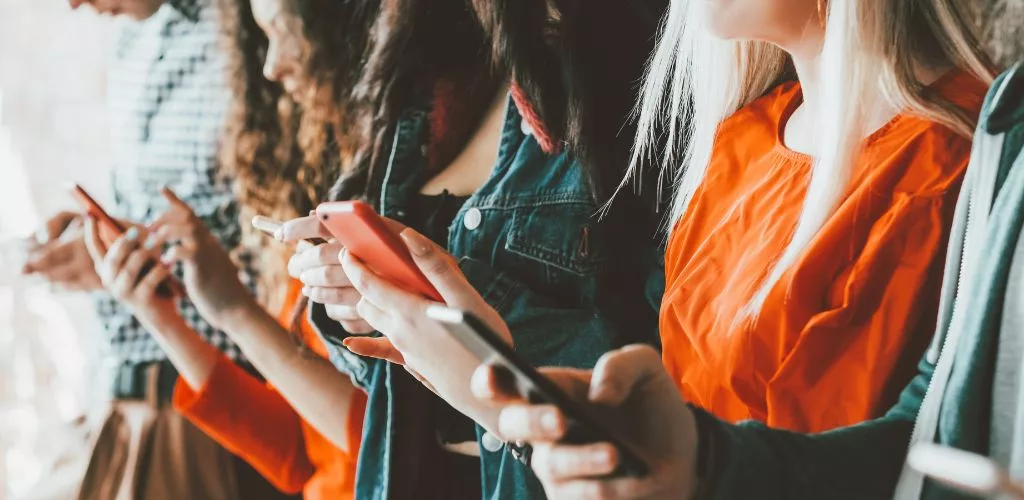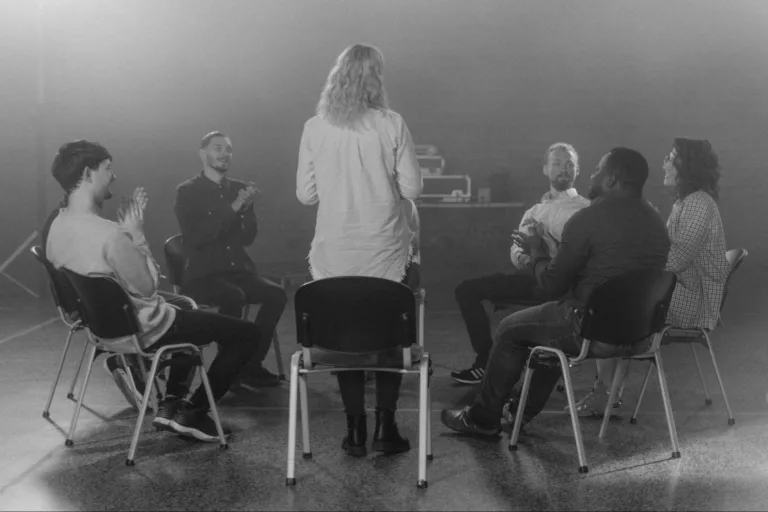
The proliferation of social media platforms over the last decade and a half has transformed global communication and societal norms, weaving an intricate web of connections and virtual interactions. However, beneath the seamless connectivity and innovative communication avenues, a rising tide of addiction has emerged, posing multifaceted challenges that span psychological, physiological, and social dimensions. Recent studies, substantiated through peer-reviewed journals, bring to the fore a critical analysis of social media’s role in fostering addiction.
Defining Social Media Addiction
Social media addiction, a concept that has gradually cemented its presence in the global discourse, extends beyond mere overuse of social media platforms; it is characterized by a compulsive and excessive engagement with social media networks, often transcending into a point where it severely hampers an individual’s daily functioning and psychological well-being.
Already in the early days of social media – the mid to late 2000s – mental health professionals began noticing patterns similar to addiction, marking the initial stage of identifying and defining social media addiction as a genuine health concern. This addiction manifests itself in various forms, including but not limited to persistent preoccupation with social media, increased usage over time, unsuccessful attempts to reduce usage, and the utilization of social media to escape problems or relieve difficult moods. These symptomatic behaviors draw parallels with other recognized addictions, showing the severity and complexity of social media addiction.
Individuals grappling with social media addiction often exhibit pronounced distress and agitation when restricted from accessing these platforms, indicating withdrawal symptoms like those seen in substance-related addictions. Furthermore, this form of addiction often dovetails with other psychological ailments, giving rise to a complex interplay of emotional, cognitive, and behavioral issues. For instance, it has been associated with increased levels of anxiety, depression, and loneliness, often leading people to spiral into a vortex of chronic mental health problems.
As the research landscape expands, it is becoming increasingly apparent that the contours of social media addiction are multifaceted, involving a dynamic interplay of psychological mechanisms and societal pressures. It beckons a deeper understanding and investigation into its underlying mechanisms to foster well-rounded perspectives and to develop strategies to mitigate it that are grounded in empirical evidence.
Mechanisms of Addiction
1. Dopamine Release
One cornerstone in understanding the addictive nature of social media lies in the neuroscience of dopamine release. Studies have underscored that prolonged and repetitive social media engagement leads to dopamine release, a neurotransmitter linked with pleasure and reward.
In the context of social media addiction, dopamine release operates on a cycle of expectation, reward, and reinforcement. Users are propelled into a perpetual loop of anticipation for social rewards such as “likes,” comments, and shares; these rewards, when received, induce a dopamine release, creating a pleasurable experience that the brain seeks to repeat, hence encouraging repeated engagement with the platform.
This process bears a remarkable similarity to the dopamine release cycles seen in other forms of addiction, such as drug abuse. In drug addiction , for instance, the use of a substance leads to a surge in dopamine levels, fostering a state of heightened pleasure and satisfaction. Over time, this can lead to an increased tolerance, requiring more frequent or higher doses of the substance to achieve the same dopamine “high,” a pattern eerily mirrored in social media addiction where users find themselves spending increasing amounts of time on these platforms to attain the same level of satisfaction.
Yet, the implications are more expansive. Beyond the immediate reward system, chronic dopamine release can lead to alterations in other neurological systems, influencing mood, attention, and stress responses. Over time, this can foster dependency, as individuals rely more heavily on social media interactions to stimulate dopamine release, establishing a cycle characterized by compulsive use and an inability to reduce usage despite apparent negative consequences in personal and professional spheres.
Studies also indicate that this dopamine-driven reward system can influence not only the frequency of social media use but also the type of content engaged with, encouraging interactions that yield higher dopamine releases, and potentially steering people towards more extreme or sensationalized content, thereby shaping not just behavior but perception and understanding of information.
The dopamine release cycle is aggravated by the intermittent and unpredictable nature of social rewards on social media, a phenomenon referred to as the “variable ratio schedule of reinforcement”, which is known to foster compulsive and habitual behaviors. This principle, based on unpredictability, is what makes gambling addictive and is similarly at play in social media environments, where users are never quite sure when they will receive the next “like” or comment, encouraging continual engagement to secure the next “hit” of dopamine release.
2. Fear of Missing Out (FOMO)
To fully grasp the role of the Fear of Missing Out (FOMO) in social media addiction, it is essential to delve into the intricate psychological framework that substantiates this phenomenon. FOMO, which fundamentally refers to the fear that others might be having rewarding experiences from which one is absent, stands as a considerable driver in compulsive social media use.
Historically, FOMO is not a new concept, as humans have a primordial need to be socially involved and informed; however, the rise of social media platforms has exponentially amplified this fear. Today, FOMO is intrinsically linked with incessant checking of social media platforms, fueling a cycle where individuals find themselves trapped in a web of compulsive engagement, as they endeavor to stay constantly updated, fearing isolation and exclusion from trending conversations and experiences.
The manifestations of FOMO can be seen in various spheres of an individual’s life. Academically, it can lead to diminished focus and compromised academic performance as students are perpetually distracted, anxiously tracking social media updates. In professional settings, it can translate into reduced productivity due to constant disruptions spurred by the urge to be socially connected. On a personal level, it fosters relationships that are more virtual than real, sometimes causing rifts and misunderstandings as individuals spend more time cultivating online personas rather than nurturing real-life connections.
Drawing parallels with other forms of addiction, FOMO operates on similar psychological landscapes where individuals, in the fear of missing out, indulge in excessive behaviors, be it gambling, shopping, or in this case, social media usage. Much like how a person with a gambling addiction is continually drawn to betting for fear of missing out on a big win, individuals trapped in the FOMO cycle are in perpetual pursuit of social validation and inclusion, often leading to unhealthy usage patterns.
The magnification of FOMO is further exacerbated by the curated content presented on social media platforms, which often portrays an idealized version of reality, encouraging users to constantly seek out more rewarding experiences and engagements, fostered by a comparison-driven culture that social media platforms inadvertently foster. Users find themselves in a relentless pursuit of validation, constantly comparing their lives to the seemingly perfect lives portrayed by others online, a cycle that feeds into the continual usage and engagement with these platforms, fueling the fire of addiction.
As society becomes increasingly aware of the repercussions of FOMO, it is incumbent upon researchers and policymakers alike to craft strategies grounded in empathy and understanding to navigate this complex landscape. Encouraging mindful usage of social media, fostering real-life connections, and nurturing self-esteem stand as pivotal avenues in mitigating the adverse effects of FOMO and steering society towards healthier engagement with social media platforms.

Correlational Studies on Social Media Addiction
1. Mental Health Implications
A rich body of literature is continually uncovering the extensive mental health implications of social media addiction. Peer-reviewed articles indicate a stark association between addiction and a gamut of adverse outcomes such as depression, increased anxiety levels, and a significant dip in overall well-being. The origin of these repercussions often lies in an incessant cycle of comparison, and exposure to highly curated and idealized representations of others’ lives, fostering environments of low self-esteem and dissatisfaction.
2. Sleep Disruption
Beyond mental health ramifications, there exists a definitive correlation between addictive social media use and disrupted sleep patterns. A ground-breaking study conducted in 2017 illustrated that increased screen time, particularly before bedtime, fosters conditions conducive to insomnia and other sleep disorders, setting a precedent for further inquiries into the domain.
Mitigating Social Media Addiction
In light of the escalating concerns surrounding social media addiction, scholars and practitioners alike have echoed the pressing need for structured interventions. Recent strategies pivot towards nurturing digital literacy, where individuals are encouraged to utilize social media mindfully and judiciously, to foster healthier relationships with these platforms. Furthermore, the incorporation of screen time limits and digital detoxes has emerged as a viable strategy in combating addiction, facilitating a balanced approach to social media usage.Conclusion
In examining the recent scholarly insights, it is evident that social media, despite being a beacon of connectivity, harbors a potent ground for addiction through a nuanced interplay of neurobiological and psychological mechanisms. The repercussions are multi-faceted, spanning adverse mental health outcomes and disrupted physiological patterns, delineating a compelling case for a re-evaluation of our engagement with social media platforms. As we stand at the crossroads, it is imperative that further research be championed to carve pathways for healthier digital ecosystems, fostering well being and harmony in the virtual and real worlds alike.
References
- Andreassen, C. S. (2015). Online social network site addiction: A comprehensive review. Current Addiction Reports, 2(2), 175-184.
- Meshi, D., Tamir, D. I., & Heekeren, H. R. (2015). The emerging neuroscience of social media. Trends in cognitive sciences, 19(12), 771-782.
- Przybylski, A. K., Murayama, K., DeHaan, C. R., & Gladwell, V. (2013). Motivational, emotional, and behavioral correlates of fear of missing out. Computers in Human Behavior, 29(4), 1841-1848.
- Keles, B., McCrae, N., & Grealish, A. (2020). A systematic review: the influence of social media on depression, anxiety and psychological distress in adolescents. International Journal of Adolescence and Youth, 25(1), 79-93
- Levenson, J. C., Shensa, A., Sidani, J. E., Colditz, J. B., & Primack, B. A. (2017). Social media use before bed and sleep disturbance among young adults in the United States: A nationally representative study. Sleep, 40(9).
- Van Rooij, A. J., Ferguson, C. J., Van de Mheen, D., & Schoenmakers, T. M. (2017). Time to abandon internet addiction? Predicting problematic internet, game, and social media use from psychosocial well-being and application use. Clinical Neuropsychiatry, 14(1), 113-121.





